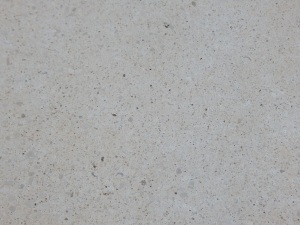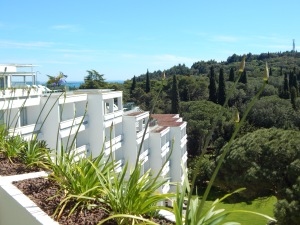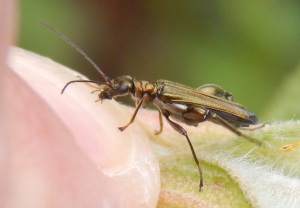[57] Worth a Thousand Words – A Blog about Signs without Words
I am going to start this one with the bit about the title that usually goes at the end of the blog. I have to admit that I thought the origin of the expression “A picture is worth a thousand words” was an old Chinese saying but it’s history is complicated and I take my information, as always from Wikipedia, which say that it is ‘an English idiom.’
The expression “Use a picture. It’s worth a thousand words.” appears in a 1911 newspaper article quoting newspaper editor Tess Flanders discussing journalism and publicity. A similar phrase, “One Look Is worth a thousand words”, appears in a 1913 newspaper advertisement for the Piqua Auto Supply House of Piqua, Ohio. An early use of the exact phrase “A picture is worth a thousand words” appears in a 1918 newspaper advertisement for the San Antonio Light.
Perhaps the modern use of the phrase stems from an article by Fred R. Barnard in the advertising trade journal Printers’ Ink, promoting the use of images in advertisements that appeared on the sides of streetcars. The December 8, 1921, issue carries an advertisement entitled, “One Look is Worth a Thousand Words.” Another advertisement by Barnard appeared in 1927 with the phrase “One Picture Worth Ten Thousand Words”, where it was labeled as a Chinese proverb. The Home Book of Proverbs, Maxims, and Familiar Phrases quotes Barnard as saying he called it “a Chinese proverb, so that people would take it seriously.” The proverb soon became popularly attributed to Confucius.
The actual Chinese expression “Hearing something a hundred times isn’t better than seeing it once” (百闻不如一见) is sometimes considered as an equivalent.
Despite this modern origin of the popular phrase, the sentiment has been expressed by earlier writers. For example, the Russian writer Ivan Turgenev wrote in Fathers and Sons in 1861, “The drawing shows me at one glance what might be spread over ten pages in a book.” The quote is sometimes attributed to Napoleon Bonaparte, who said “A good sketch is better than a long speech” (Un bon croquis vaut mieux qu’un long discours.)
[I won’t confuse you by considering ‘The journey of a thousand miles begins with one step,’ a genuine Chinese saying attributed to Lao Tzu.]
It does, of course, mean that a complex idea may be conveyed with just a single still image, perhaps more effectively than a long description in words. In a strange way when we use pictures as symbols the opposite is true. A detailed picture is used to replace a statement of a few words.

The green gross is an internationally recognized term for what we used to call a Chemist. Now it’s sometimes called a Pharmacy – somewhere that dispenses controlled drugs. As a symbol it just represents one word.
The next just means ‘Litter Bin.’ (At least it does in the UK. Americans may call it a ‘Trash Can.’ Perhaps in a way the picture says a little more.)

The next two again replace what could have been one-word signs in an amusing way. With typical British euphemism and politeness we don’t say ‘Toilets,’ and we generally prefer ‘Gentlemen’ and ‘Ladies’ to ‘Men’ and ‘Women.’ Sometimes pubs have more amusing ideas such as ‘Boys’ and ‘Girls’ (or in seaside towns I have seen ‘Buoys’ and ‘Gulls.’) These pictures say the same thing.


Here are two more symbols, both just a little more than a symbol. The horse-shoe outside a house was presumable a token of good luck and the trigonometric point, used long ago to aid map-making, had to be enduring and fixed.


The next two large pictures are like signs to show a bird hide. They were very large and made the purpose of the little wooden building very obvious.


But the hide did actually also have its name on a sign in letters – in English and Welsh. So perhaps the birds were just pictures.
Traffic Signs
I am doing this blog, as I generally do, in a fairly random order, and next we have some traffic lights. Even a simple red or green circular light is a picture sign.
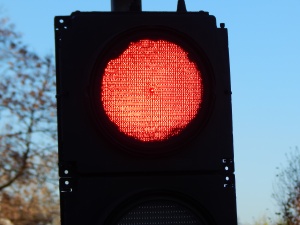


By the gates at level crossings we have flashing lights (and accompanying noises.)


There are various versions of pedestrian lights. Some are small, others are larger on the other side of the street.



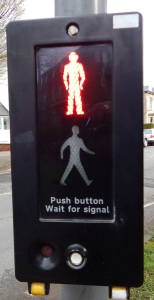




(It’s easier to photograph the red signs. I feel I ought to cross when they are green.)
Some include cycle crossings and so include a picture of a cycle.


[I am not sure why something bright red turns out to be more or less white when photographed with a red or orange border. Perhaps it’s a trick of perception or perhaps the camera does strange things with bright lights.]
Here are some more symbols on roads, pedestrian and cycle paths and car parks.





Logos and Advertising
All logos are pictures without words. They are instantly recognizable and may convey more than just the name. Where we don’t know who is selling sometimes a picture shows us what is for sale in an attempt to invoke impulse buying.






I wanted to do a lot of pub signs. When I was young all pubs had pictures as signs. We used to play Pub Cricket on long journeys. Now most of the pubs have gone, most of those that are left have become restaurants and the remaining country pubs have nearly all lost their pictorial signs.
Miscellaneous
A few more picture signs without comment.













Crosses and Flags are symbolic picture signs.






A Little Story
Almost hidden away in Cheltenham’s High Street is a series of mosaic pictures showing the story of an elephant that supposedly escaped from a circus in the town. The first bits of the words of the story have been removed but here are the pictures.








[I am not sure that these are signs but I wanted to include them somewhere!]
Weather Vanes
I wasn’t quite sure where to put these but they are signs and they are pictures.







Many of my photographs have been heavily cropped for this blog to show just the sign.
I will end with one of my shots of pedestrian traffic lights.

You have to be careful with photographing glass surfaces. You can see me with my camera, camera case and shopping bag!





















































































